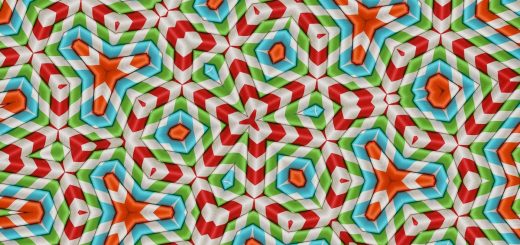The Mandala: Sacred Geometry and Meditation

Hey there, amazing readers! 🖐️ Just a quick note: yes, we know there are a lot of ads here. Trust us, we get it—it’s not the prettiest look, but they help us keep this blog alive and kicking. Those pesky little ads cover the costs of all the behind-the-scenes magic, from hosting and tech stuff to creating content we hope you’ll love.
We’re committed to delivering quality posts, and your support (even just sticking around despite the ads) means everything to us. So, bear with us, and thanks for helping us keep the good vibes rolling. Now, on to the fun stuff! 😉
TRANSLATE BUTTON AT THE END OF THE ARTICLE
A Quick Overview
Mandalas are intricate circular designs that hold deep spiritual significance across various cultures and traditions.
These sacred geometric patterns have been used for centuries as tools for meditation, self-expression, and healing.
The symmetrical and intricate nature of mandalas is believed to promote relaxation, concentration, and mindfulness.
By coloring or creating mandalas, individuals can tap into their inner creativity and connect with the divine.
In this article, we will delve into the world of mandalas, exploring their meanings, designs, and the therapeutic benefits they offer.
The Mandala: An Ancient Symbolic Art Form
Mandalas, originating from Sanskrit meaning "circle," have been utilized by various spiritual traditions, including Hinduism, Buddhism, and Native American cultures.
These intricate designs often feature geometric shapes, symbols, and patterns that radiate from the center outwards.
Mandala art is not just visually appealing but is also a reflection of the universe’s order and harmony.
The process of creating or meditating on a mandala is said to bring about a sense of balance and interconnectedness with the cosmos.
Understanding the Meaning Behind Mandala
The circular shape of a mandala symbolizes the cyclical nature of life, death, and rebirth.
It represents the interconnectedness of all living beings and the eternal unity of the universe.
Each element within a mandala, such as colors, shapes, and symbols, holds specific meanings and can convey different aspects of spirituality and consciousness.
Mandalas are often used as a tool for introspection, helping individuals explore their inner world and connect with their higher selves.
The Intricate Geometry of Mandala Designs
Mandala designs are characterized by their complex geometric patterns, which can include circles, squares, triangles, and spirals.
The symmetrical nature of mandalas reflects the perfect balance and order found in nature.
Creating a mandala requires a keen eye for detail and precision, as each line and shape must be carefully executed to maintain the overall harmony of the design.
The intricate geometry of mandalas is not only visually captivating but also serves a deeper purpose in promoting focus and concentration.
Mandala Meditation: A Spiritual Practice
Mandala meditation involves focusing on a mandala design to quiet the mind and induce a state of deep relaxation.
By gazing at the intricate patterns of a mandala, practitioners can enter a meditative trance where thoughts cease to exist, and pure awareness arises.
This form of meditation is believed to open the door to spiritual insights, inner wisdom, and a deeper connection to the divine.
Mandalas act as a visual anchor, guiding the mind towards a state of heightened consciousness and inner peace.
How Mandala Art Promotes Relaxation
Engaging with mandala art, whether through coloring, drawing, or simply gazing at a design, can have a calming effect on the mind and body.
The repetitive and soothing nature of creating or observing mandalas helps reduce stress, anxiety, and mental clutter.
The act of focusing on intricate patterns can quiet the mind and promote a sense of tranquility.
Mandalas are often used in art therapy and mindfulness practices to encourage relaxation and emotional healing.
The Healing Power of Mandala Therapy
Mandala therapy is a form of art therapy that uses mandalas as a tool for self-expression and healing.
By creating or coloring mandalas, individuals can explore their emotions, thoughts, and inner conflicts in a non-verbal way.
The process of making art can be cathartic and therapeutic, allowing for the release of pent-up emotions and the expression of one’s innermost feelings.
Mandalas provide a safe space for self-exploration and healing, making them a valuable tool in the journey towards mental and emotional well-being.
Mandala Coloring: A Tool for Mindfulness
The rise in popularity of mandala coloring books has brought the therapeutic benefits of mandalas to a wider audience.
Coloring mandalas can be a form of active meditation, where individuals focus on the present moment and immerse themselves in the creative process.
The repetitive motion of coloring within the lines of a mandala can induce a state of mindfulness, where worries and distractions fade away.
This simple yet effective practice can help individuals relax, unwind, and center themselves in the midst of a busy day.
Using Mandala to Aid in Concentration
The intricate and symmetrical nature of mandalas can be a powerful tool for enhancing concentration and focus.
When creating or studying a mandala design, individuals are required to pay close attention to detail and maintain precision.
This process of intense concentration can sharpen cognitive skills, improve memory retention, and boost mental clarity.
By engaging with mandalas regularly, individuals can train their minds to stay present and focused, leading to increased productivity and a heightened sense of awareness.
Mandala Creation as a Form of Self-Expression
Creating a mandala from scratch allows individuals to tap into their inner creativity and express themselves in a unique way.
The process of designing a mandala can be deeply personal, reflecting one’s emotions, beliefs, and experiences.
Each line, shape, and color choice holds meaning and significance, making mandala creation a form of self-discovery and self-expression.
Whether through drawing, painting, or digital design, mandalas offer a blank canvas for individuals to unleash their creativity and share their inner world with others.
Mandalas in Different Cultures and Traditions
Mandalas can be found in various cultures and spiritual traditions around the world, each with its unique symbolism and significance.
In Hinduism, mandalas are used in religious rituals and ceremonies to represent the universe and the cycle of life.
Tibetan Buddhists create intricate sand mandalas as a form of meditation and impermanence.
Native American tribes use mandalas as symbols of protection, healing, and spiritual growth.
The universal appeal of mandalas transcends cultural boundaries, uniting people in a shared reverence for the divine order of the cosmos.
The Science Behind the Symmetry of Mandalas
The symmetrical patterns found in mandalas have a profound effect on the human brain and psyche.
Studies have shown that symmetrical designs can evoke a sense of harmony, balance, and aesthetic pleasure in individuals.
The symmetrical nature of mandalas activates the brain’s reward system, releasing feel-good neurotransmitters like dopamine and serotonin.
This neurological response can induce a state of relaxation, focus, and heightened creativity.
The intricate symmetry of mandalas is not just visually appealing but also triggers a positive emotional response in the brain, promoting overall well-being and mental health.
Incorporating Mandalas into Daily Meditation Practice
Integrating mandalas into daily meditation practice can deepen the spiritual experience and enhance the benefits of mindfulness.
By choosing a mandala design to focus on during meditation, individuals can cultivate a sense of inner peace, clarity, and connection to the divine.
The act of meditating on a mandala can help quiet the mind, reduce stress, and promote emotional balance.
Whether through visualization, gazing, or creating mandalas, incorporating these sacred designs into meditation can lead to a profound transformation in one’s spiritual journey.
Conclusion
Mandalas are more than just intricate geometric designs; they are powerful tools for meditation, self-expression, and healing.
The ancient symbolism and intricate geometry of mandalas hold deep spiritual significance across various cultures and traditions.
By engaging with mandalas through coloring, meditation, or creation, individuals can tap into their inner creativity, promote relaxation, and enhance their spiritual practice.
The therapeutic benefits of mandalas extend beyond mere aesthetics, offering a pathway to inner peace, emotional healing, and spiritual growth.
Incorporating mandalas into daily life can lead to a profound transformation in one’s mental, emotional, and spiritual well-being.

The Enlightenment Journey is a remarkable collection of writings authored by a distinguished group of experts in the fields of spirituality, new age, and esoteric knowledge.
This anthology features a diverse assembly of well-experienced authors who bring their profound insights and credible perspectives to the forefront.
Each contributor possesses a wealth of knowledge and wisdom, making them authorities in their respective domains.
Together, they offer readers a transformative journey into the realms of spiritual growth, self-discovery, and esoteric enlightenment.
The Enlightenment Journey is a testament to the collective expertise of these luminaries, providing readers with a rich tapestry of ideas and information to illuminate their spiritual path.
Our Diverse Expertise 🌟
While our primary focus is on spirituality and esotericism, we are equally passionate about exploring a wide range of other topics and niches 🌍📚. Our experienced team is dedicated to delivering high-quality, informative content across various subjects ✨.
To ensure we provide the most accurate and valuable insights, we collaborate with trusted experts in their respective domains 🧑🏫👩🏫. This allows us to offer well-rounded perspectives and knowledge to our readers.
Our blog originally focused on spirituality and metaphysics, but we’ve since expanded to cover a wide range of niches. Don’t worry—we continue to publish a lot of articles on spirituality! Frequently visit our blog to explore our diverse content and stay tuned for more insightful reads.






